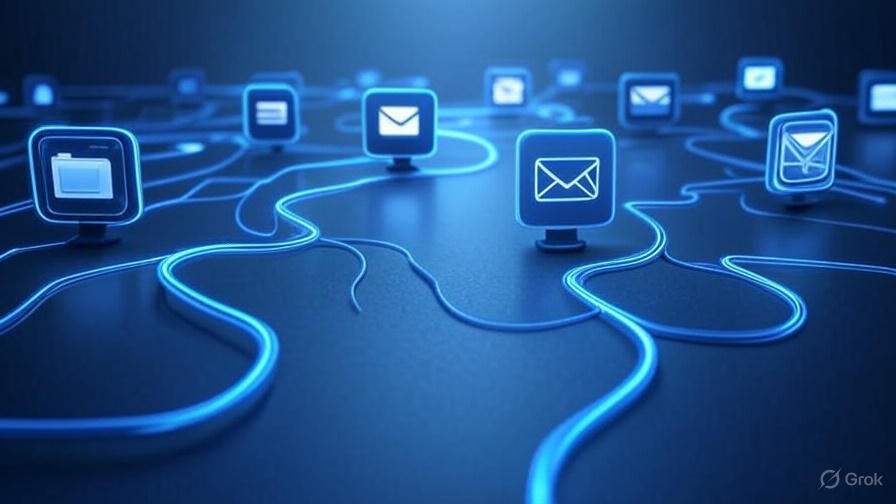Microsoft is once again redefining the desktop experience. With the latest Windows 12 Insider Preview, a powerful new feature has emerged: Windows Flow. More than just another AI assistant, Flow is an on-device automation engine designed to learn your habits and streamline your daily tasks. But what is it, how does it work, and how can you leverage it to your advantage?
This comprehensive guide will break down everything you need to know about Windows Flow, from initial setup to mastering its most powerful capabilities and understanding its privacy implications.
What is Windows Flow and How is it Different from Copilot?
It’s easy to confuse Flow with Microsoft’s other AI ventures like Copilot. However, their functions are fundamentally different.
- Copilot is a creative and informational assistant. You give it explicit commands to generate text, summarize documents, or search for information. It is primarily a reactive tool that relies on cloud processing.
- Windows Flow is a proactive, on-device automation engine. It operates in the background, observing your repetitive workflows. Did you just download a PDF, rename it, and move it to a specific project folder? Flow notices. After a few times, it will offer to automate that entire sequence for you with a single click.
The key differentiator is its “on-device” nature. All learning and processing happen locally on your machine, which is a significant advantage for privacy and speed. It’s designed not to answer your questions, but to anticipate your actions.
Core Features of Windows Flow
Windows Flow is built on three primary pillars of automation:
1. Pattern Recognition & ‘Flow’ Suggestions:
This is the core of the tool. Flow monitors your activity for repetitive task chains. Common examples include:
- Opening the same three applications and websites every morning.
- Moving downloaded bank statements from your ‘Downloads’ folder to a ‘Finances’ folder.
- Taking a screenshot, opening it in Paint, cropping it, and saving it to your desktop.
When Flow detects a pattern, a discreet notification will appear, offering to create a “Flow” to perform that entire sequence in the future.
2. The Flow Editor: Custom Automation
For power users, the Flow Editor is where the magic happens. Here you can build custom automation from scratch without waiting for a suggestion. The editor uses a simple, block-based interface where you can chain together triggers and actions.
- Triggers:
When I plug in my external hard drive...,Every day at 5 PM...,When a file is added to this folder... - Actions:
...launch Spotify and Slack,...run a backup script,...convert that file to a PNG and email it to my team.
3. Contextual Awareness
Flow integrates with the Windows shell to provide context-aware suggestions. For example, if you plug in a YubiKey, Flow might suggest opening your password manager and secure browser. If you connect to your office Wi-Fi, it might offer to launch Teams and Outlook.
How to Enable and Configure Windows Flow (Windows 12 Insider Preview)
Ready to try it out? If you’re on the latest Windows 12 Insider build, here’s how to get started.
- Enable the Feature: Navigate to
Settings>AI & Automation>Windows Flow. If it’s your first time, you’ll be greeted with a welcome screen. Toggle the main “Enable Windows Flow” switch to on. - Set Your Privacy Level: You will be prompted to choose a learning level:
- Basic: Flow only observes explicit patterns you repeat more than five times. Data is minimal.
- Recommended: Flow uses more nuanced learning to detect patterns faster (e.g., after 2-3 repetitions) and offers more complex suggestions.
- Full: Allows Flow to analyze application content (e.g., the name of a file) for more powerful, context-aware automations.
- Review Your First ‘Flows’: Flow comes with a few pre-built suggestions. Review them in the Flow Editor to understand how they work. A great starting point is the “Organize Desktop” Flow, which automatically sorts files into ‘Documents’, ‘Images’, and ‘Other’ folders.
- Start Working: Simply use your computer as you normally would. When Flow detects a potential automation, you’ll see a small pop-up in the corner of your screen. You can approve it, dismiss it, or tell Flow to never suggest it again.
The Privacy Question: What Data is Microsoft Collecting?
Given recent concerns over features like Windows Recall, the privacy of Flow is a critical consideration. Microsoft has been upfront that Flow is an on-device feature. This means:
- Your activity patterns and the ‘Flows’ you create are stored and processed locally on your PC.
- This data is not uploaded to Microsoft’s cloud or used to train their larger AI models.
- You can pause Flow’s learning or delete its entire learned history at any time via the
Settingsmenu.
While the “Full” privacy setting does allow the tool to read file names and application titles, the processing remains local. For users who are uncomfortable with this, the “Basic” setting provides a solid compromise between functionality and data privacy.
After testing Windows Flow, it’s clear this is far from a gimmick. For casual users, it will offer modest quality-of-life improvements by automating small, nagging tasks.
For power users, IT professionals, and anyone with a workflow-intensive job, Windows Flow is a potential game-changer. The ability to quickly automate multi-step processes without complex scripting can translate into significant time savings.
While still in its early days, Windows Flow is a powerful statement about Microsoft’s vision for the future of the PC—an intelligent, proactive partner rather than a passive tool. It’s a feature to watch closely, and for those willing to embrace automation, it’s one worth mastering today.

